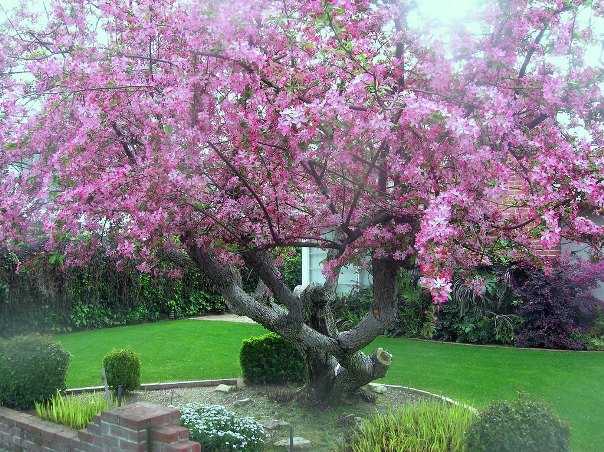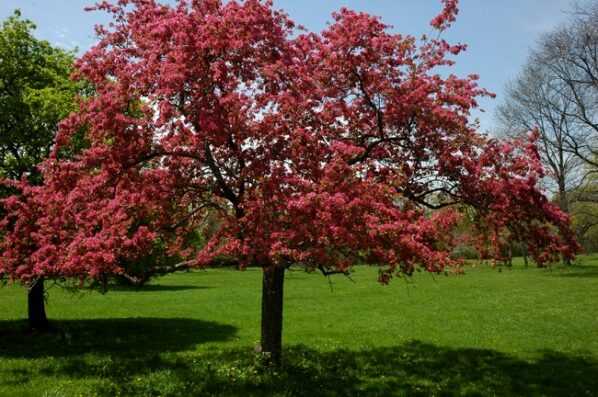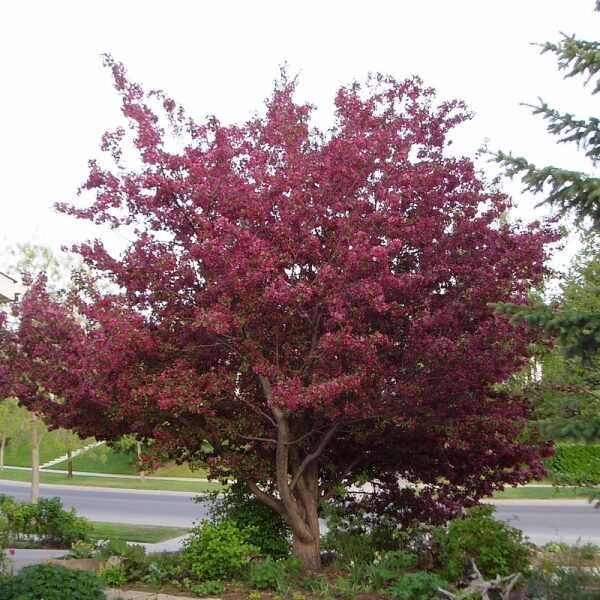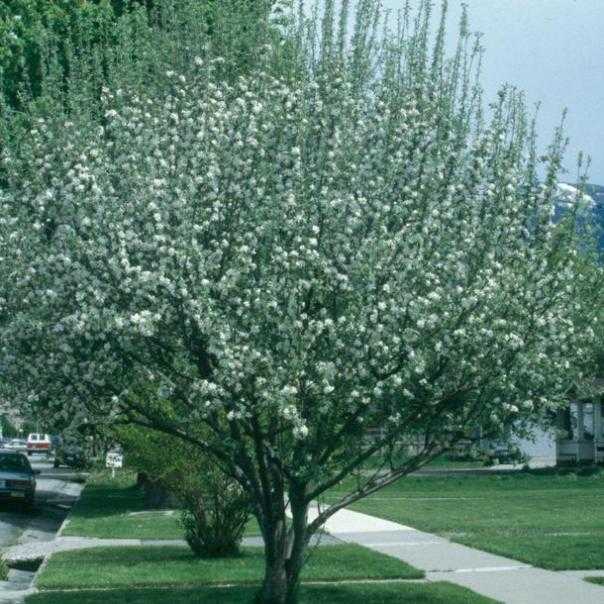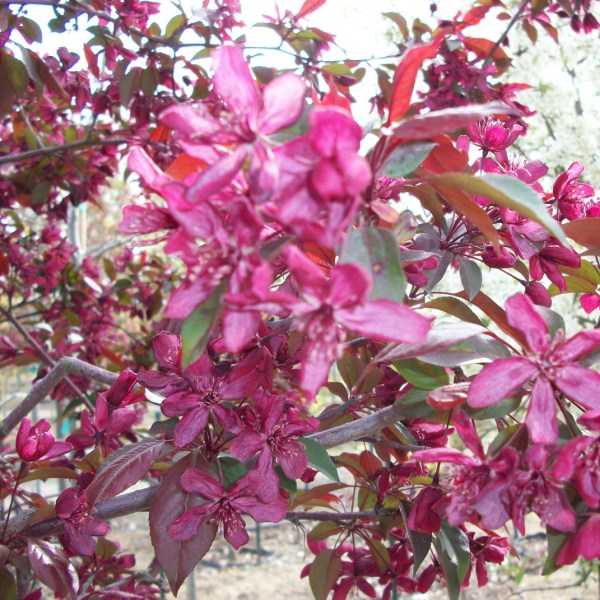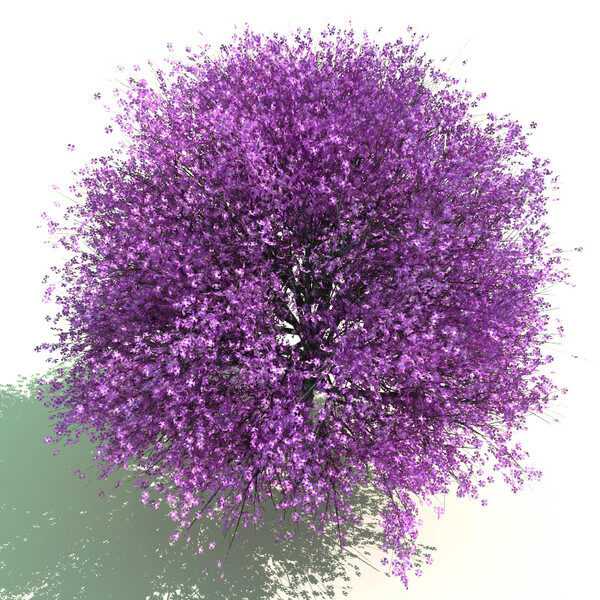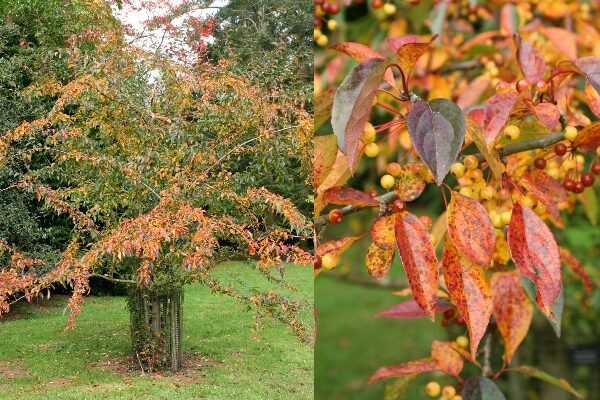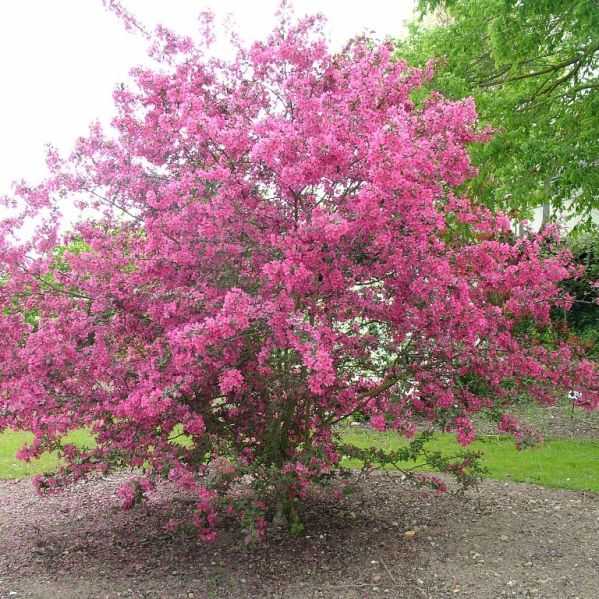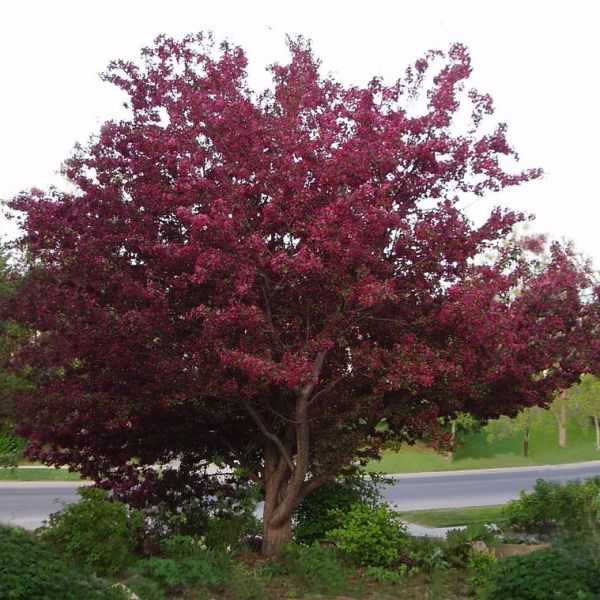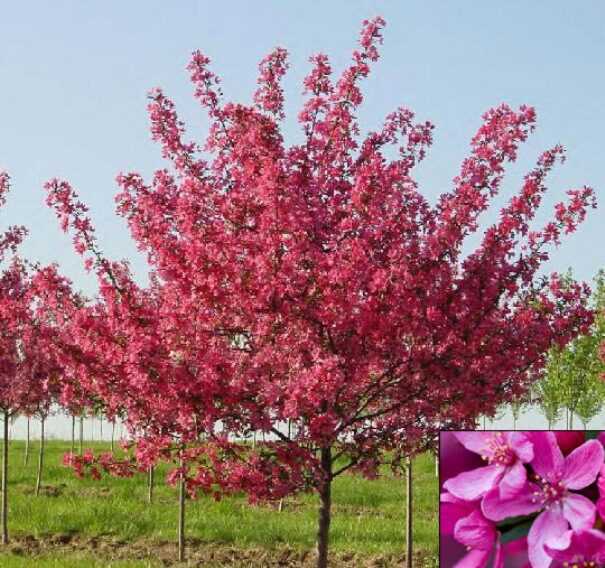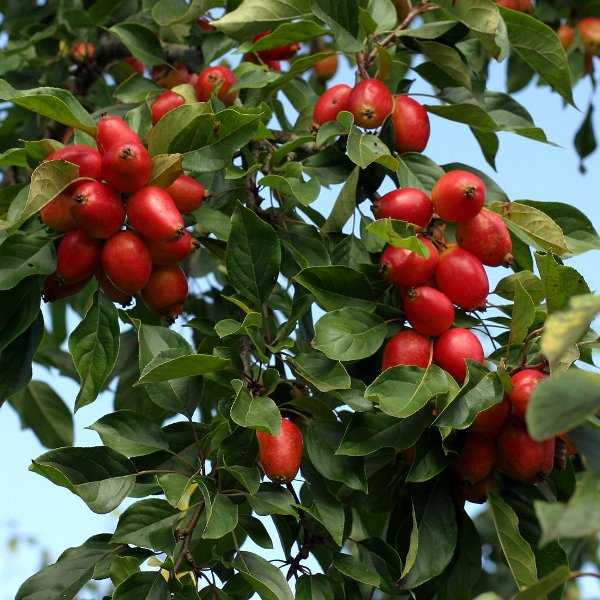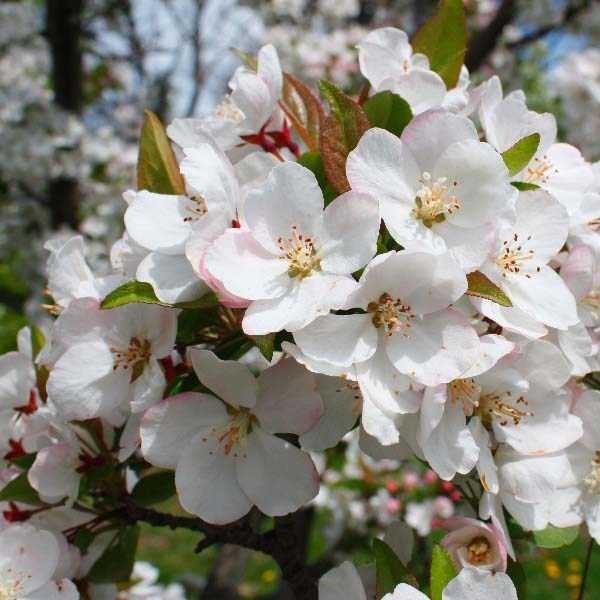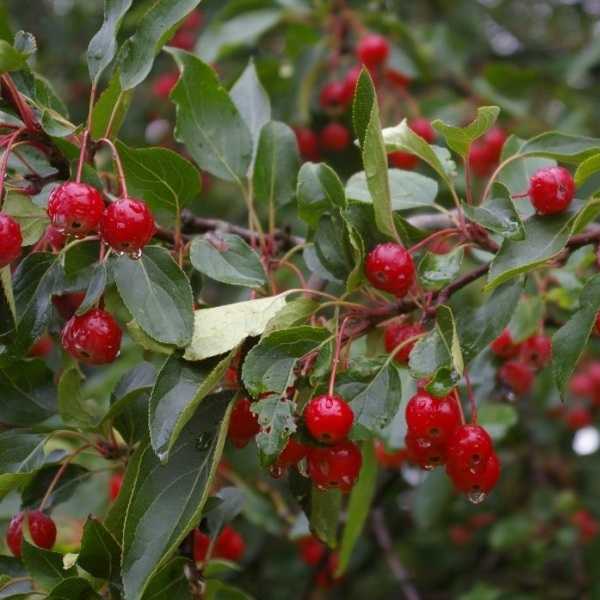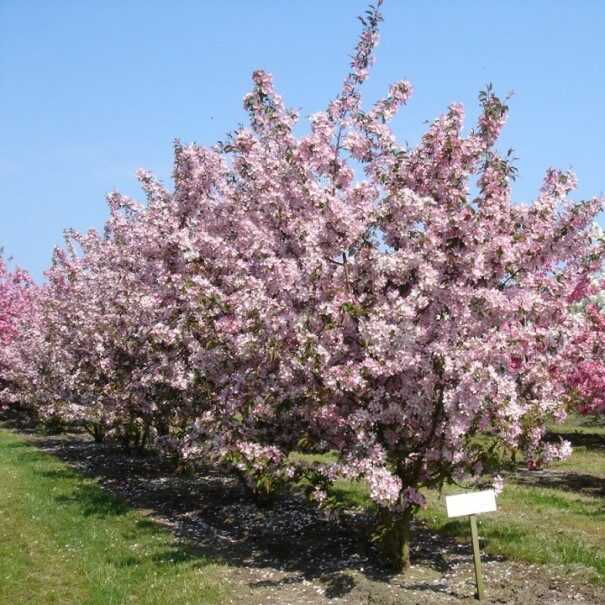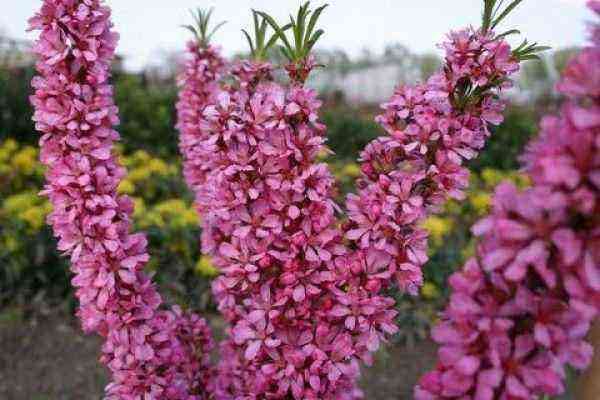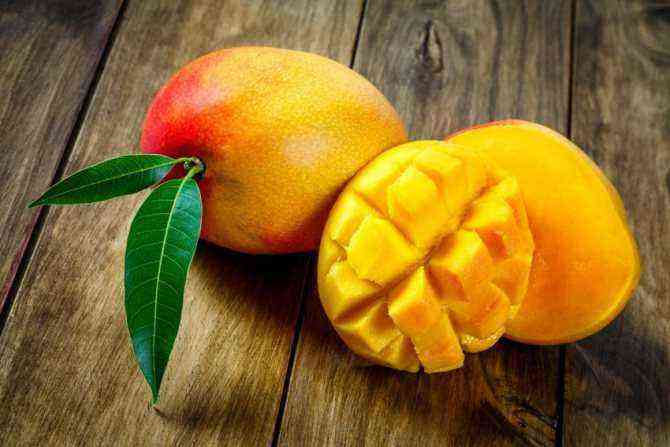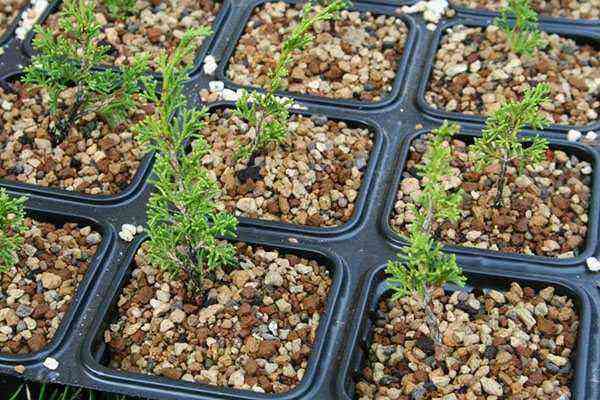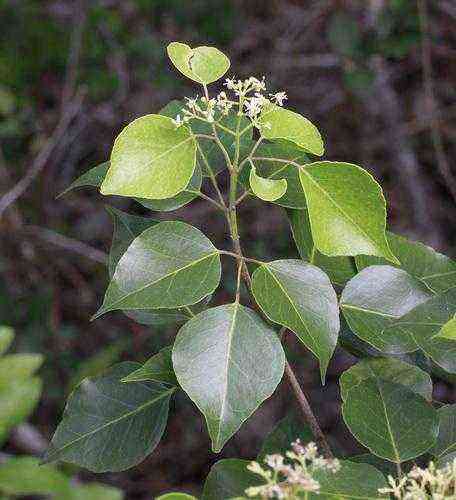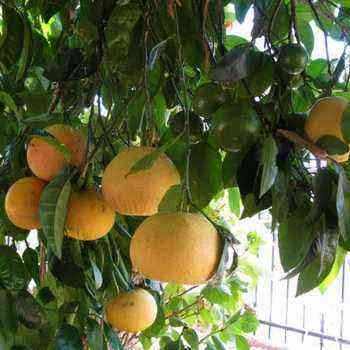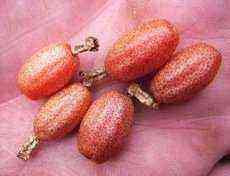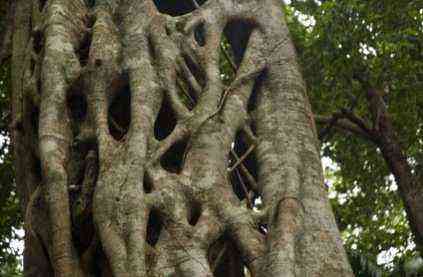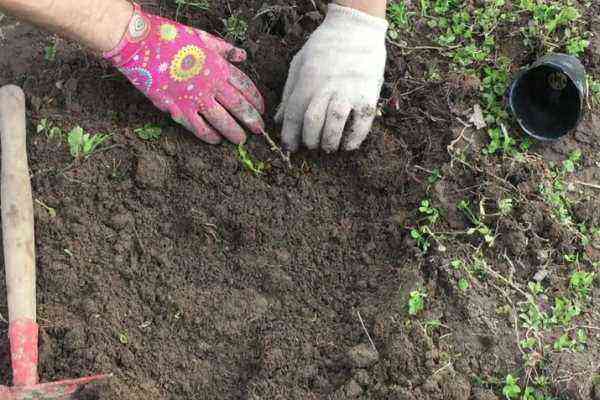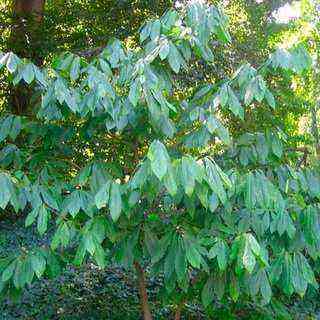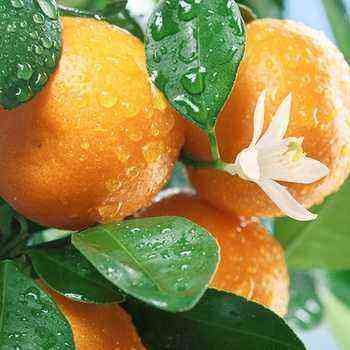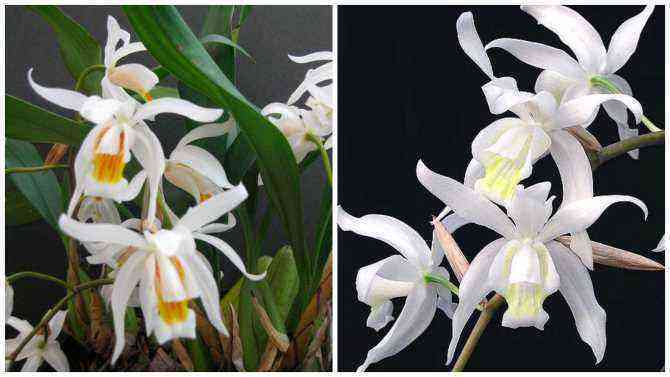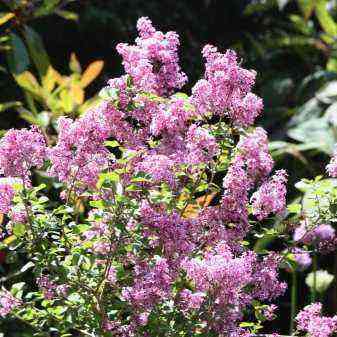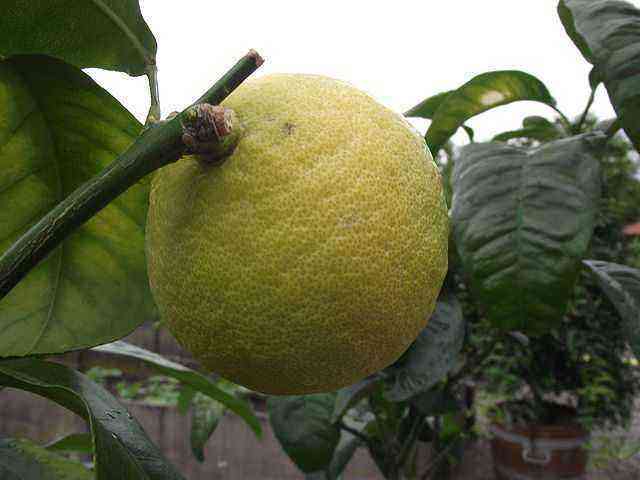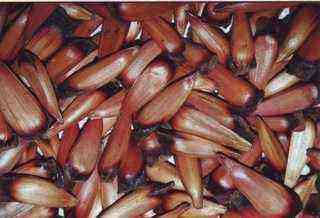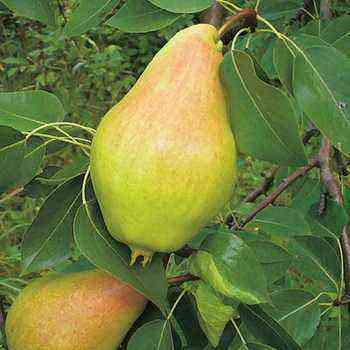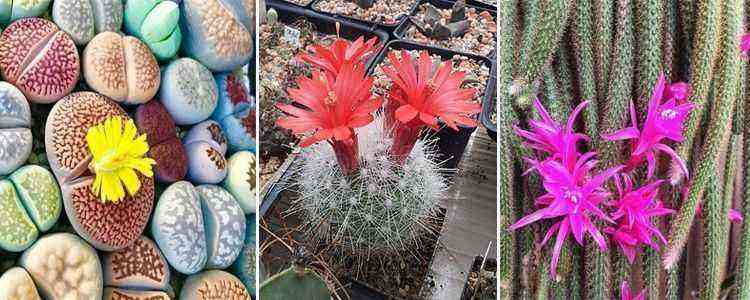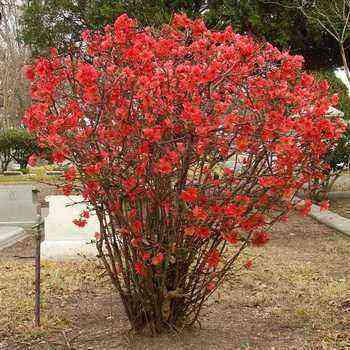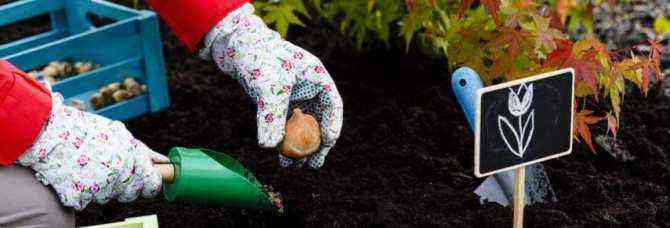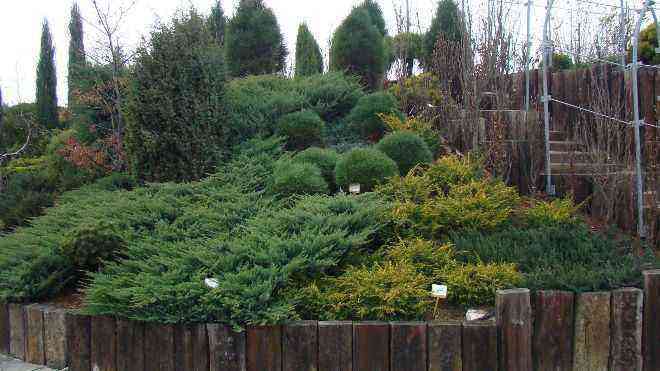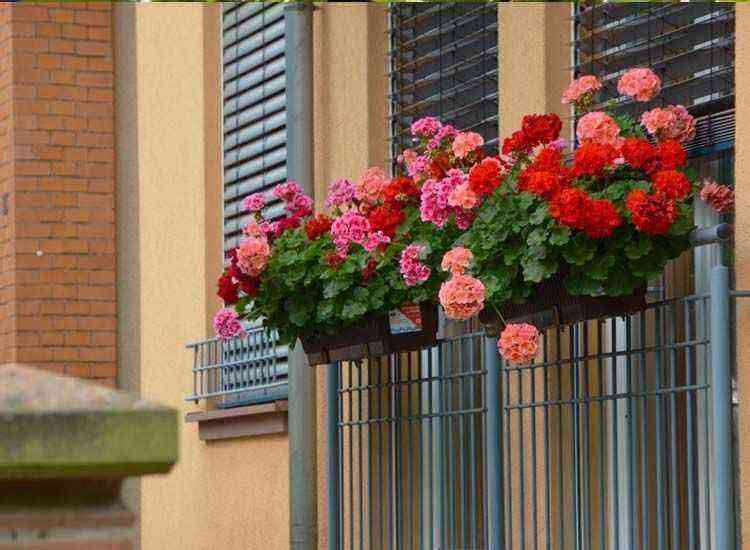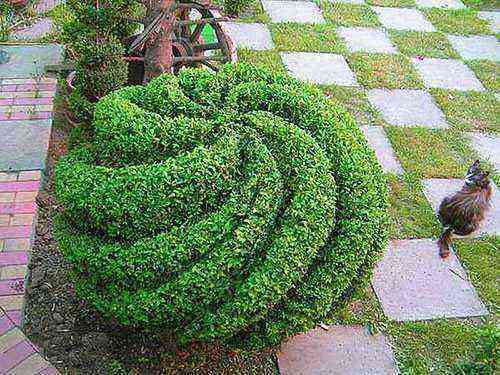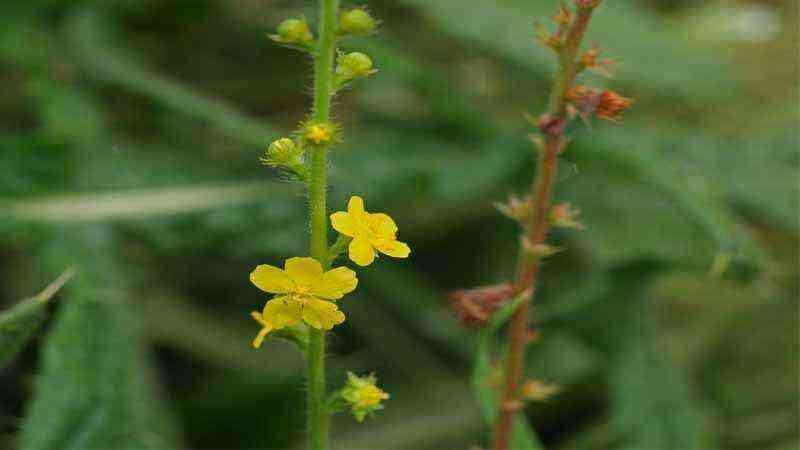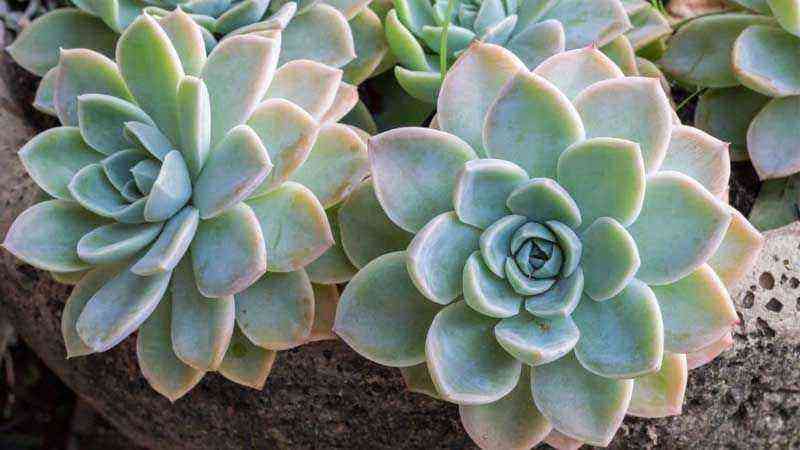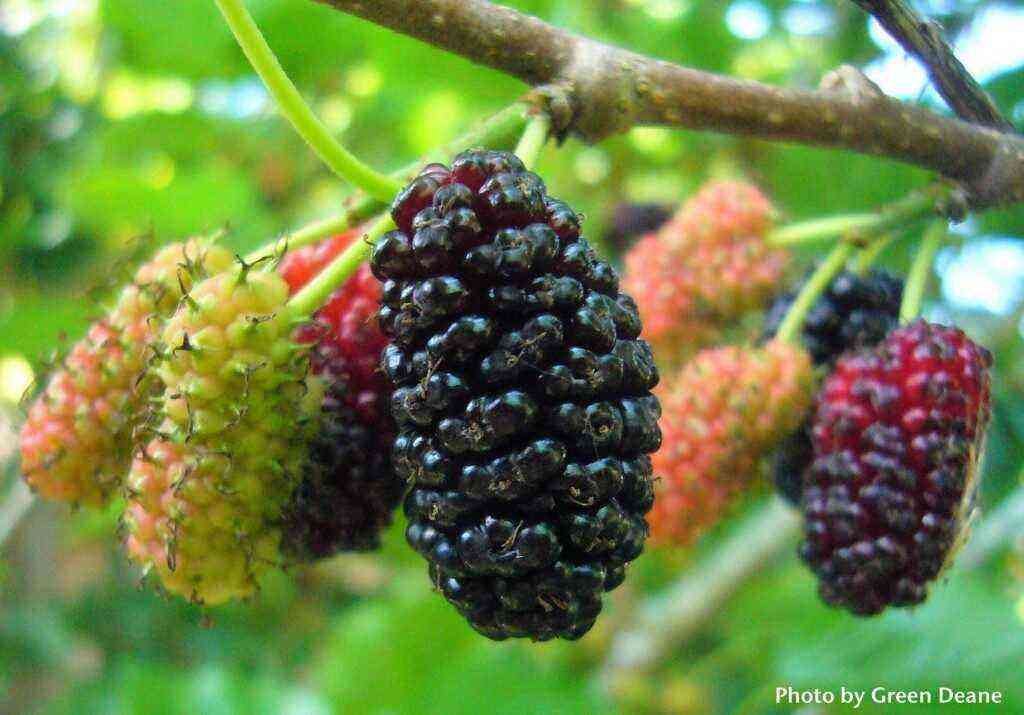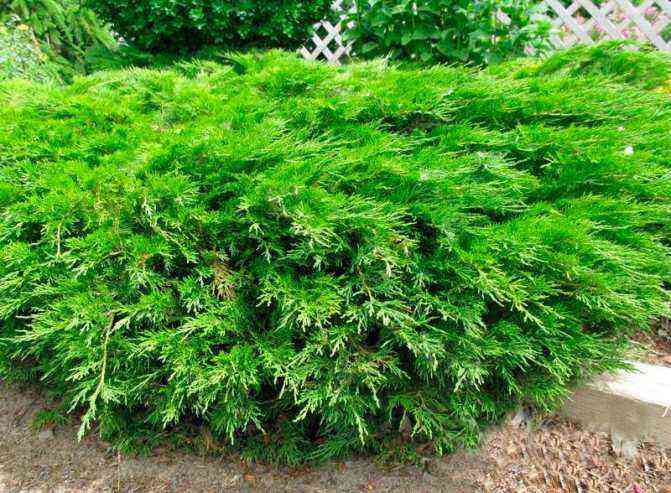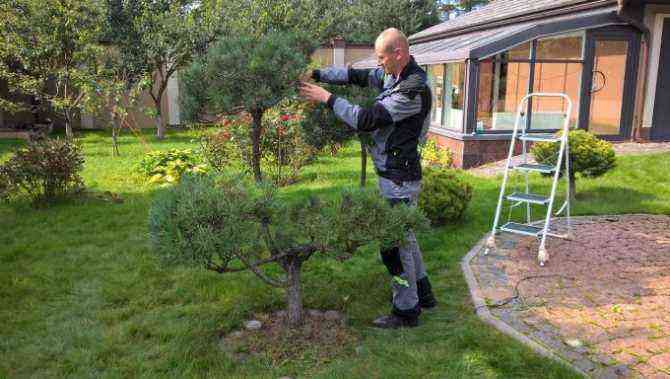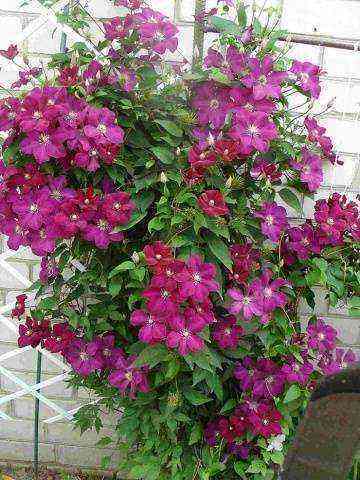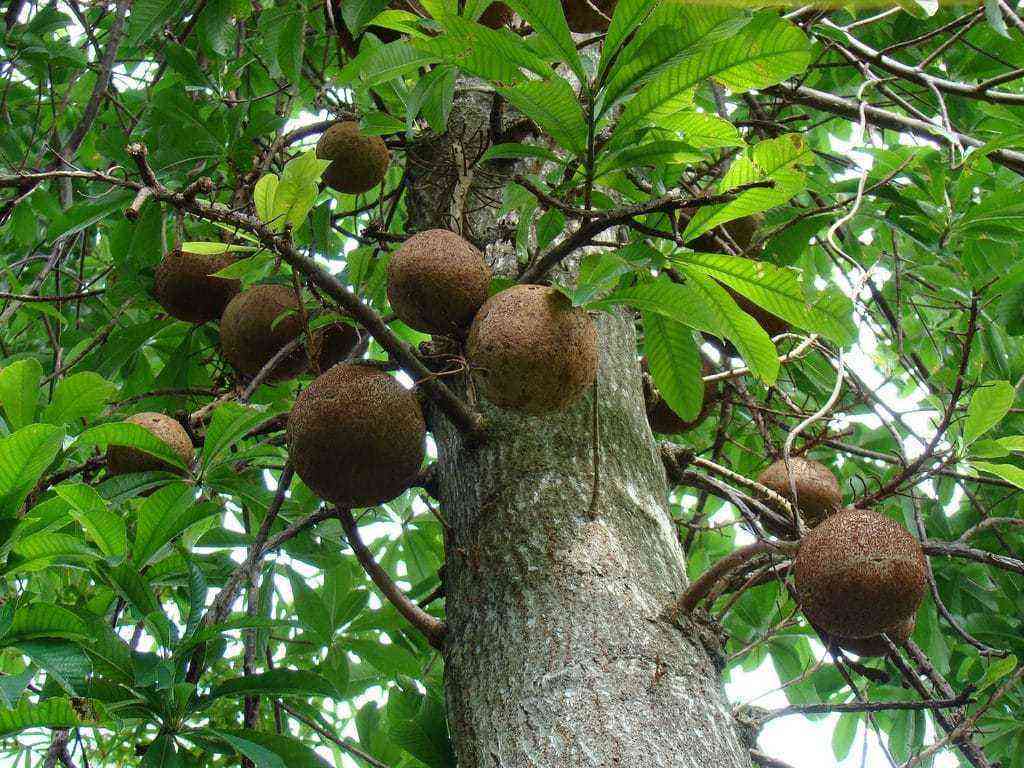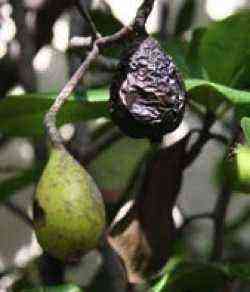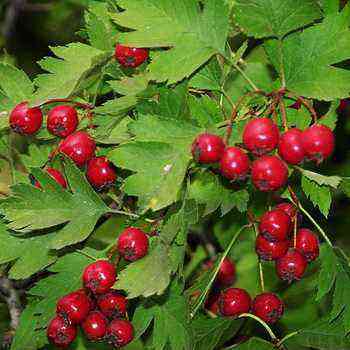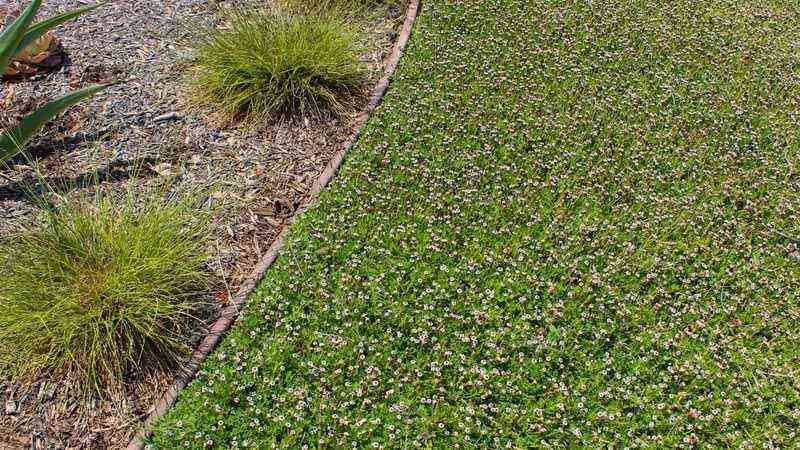A variety of plants that are designed to form a favorable landscape design on a personal plot include both exotic species and modifications of familiar trees and shrubs. A decorative apple tree is often used in garden design. It is unpretentious to the conditions of its growth and is presented in breeding in the form of many different species and varieties. The planting of a decorative apple tree with red leaves is considered a special chic. This plant allows you to form bright accents and decorate even shady corners of the garden. Read about how the decorative apple tree is used in garden design and what varieties are available for planting in this material.
Description of the culture of the decorative apple tree and its photo
In culture, this is a low tree, which rarely reaches 10 meters at the top of its crown. Ornamental apple trees can also be shrubby forms of culture. The crown, in the absence of trimming, is formed in the form of an irregular oval or ball. Some varieties can bear fruit successfully, but the fruit does not have pleasant organoleptic properties. The color of the bark of the stem can range from pastel gray to deep brown. When choosing a variety of ornamental apple trees, the shape and color of the deciduous plate deserves special attention. Some species are presented with a red coloration and a long period of non-falling leaves in the fall. This allows you to create stunning landscapes even with poor soil mix and adverse weather conditions. Most of the varieties of decorative apple trees have a dense deciduous mass of saturated green color, which transforms into a yellow and red riot of colors only in late August – early September. The average length of an elliptical or plum leaf is 100 mm.
During the flowering period, the entire crown is densely covered with fragrant flowers, which can reach 40 mm in diameter. The main color is white, which can have various shades of pink, peach, ivory, etc. Single flowers are collected in bouquets of inflorescences with the help of legs. Fruit formation begins immediately after flowering. In the center of each flower there is a receptacle, which gradually grows and fills with pulp. The outer color of the fruit is green at first, then, as it ripens, it changes to yellow and red.
The description of the ornamental apple tree would not be complete without mentioning one amazing property of this garden culture. These trees have fantastic resistance to adverse environmental factors. This is a frost-resistant culture that grows successfully even in the northern regions of our country.
You can see various types of varieties of decorative apple trees in the photos presented on this page:
Planting a decorative apple tree
This garden culture prefers a well-lit place with a light breeze for active growth, which allows for quick pollination of flowers. It is not necessary to use poorly structured soils for preparation of the planting site. Planting an ornamental apple tree is possible in early spring and early autumn. You need to understand that during autumn planting, it will take time for the tree to root and prepare for subsequent wintering. Therefore, the planting of a decorative apple tree is carried out no later than the second decade of September.
As a rule, for planting, either ready-made planting material in the form of rooted cuttings is used, or seeds that can be collected in the fall on their own. For their readiness, the fruit is brought to a state of wrinkling of the outer rind. After that, the seeds are taken out, which should be subjected to subsequent stratification to increase the percentage of germination. To do this, you need to place well-dried seeds on the top shelf of the refrigerator for 30 days.
Planting an ornamental apple tree with seeds is carried out in mid-December at home in boxes with well-structured and fertilized soil. The first shoots appear after 20 – 30 days. The pick is carried out in phase 2 of these leaves. After that, the seedlings grow quickly, but they need additional lighting in order to prevent the sprouts from pulling out. Top dressing is carried out with complex mineral fertilizers with mullein. Landing in the ground after the threat of return spring frosts has passed. Mandatory preliminary hardening of seedlings is required. To do this, they need to be gradually accustomed to open ground conditions, daily taking containers with seedlings into the open air for a short period of time.
Please note that some varieties and types of ornamental apple trees must be grafted onto a suitable stock before planting. These are types such as the ornamental apple tree of Nedzwiecki and Royalty. If possible, it is better to purchase them ready-made as seedlings. In some cases, for example, for the formation of hedges, wild apple seedlings are used. They reproduce by self-garden and usually do not lose their decorative properties when transplanted.
Planting a decorative apple tree begins with planning the places for its placement. It is usually recommended to keep the distance between seedlings at least 5 meters when planning to obtain dense plantings and at least 15 meters for single compositions.
The landing holes are being prepared according to a pre-planned plan. For this, a planting hole is dug up to a depth of 40 cm. Compost or humus is brought to the bottom. It is not recommended to use fresh manure. The earth is poured onto the compote with a layer of up to 10 cm. Then complex mineral fertilizers are applied and the whole mixture is mixed. 5 liters of water is poured and a decorative apple tree seedling is installed. Gradually, with the expansion of the root system, it is necessary to fill the hole. Water abundantly – at least 10 liters for each seedling. Re-watering is required after 2 days. Then watering is carried out once a week. The surface around the seedling must be mulched with pine needles or rotted sawdust.
Ornamental apple varieties: photos and brief descriptions
With the help of the selection of species and varieties, you can create amazing landscapes that will delight the eye with exuberant flowering for a long time from early spring to mid-summer. In the second half of July, decorativeness is added by small, densely planted fruits of bright color.
When choosing varieties of decorative apple trees, several points must be taken into account:
- on average, the flowering period of one species lasts from 10 to 15 days;
- some varieties of ornamental apple trees are capable of long-term bud formation, this increases the flowering period;
- there are different colors of flowers and leaves;
- a unique combination is obtained when planting next to trees with snow-white buds and carmine flowers.
Such varieties of ornamental apple trees as purple, Japanese Tsumi, East Asian Khubeiskaya and Nedzvetsky apple trees have special decorative properties. We suggest further reading brief descriptions and seeing photos of some varieties of decorative apple trees.
Decorative apple tree “Weeping”
Another name for this variety is riverine. It was introduced into breeding practically unchanged, wild. In nature, it is found almost everywhere on the North American continent. It grows with proper care up to 12 meters in height and has long flexible branches that, in the process of growing deciduous mass and ripening of fruits, tend to the ground. That is why this decorative apple tree was named “Weeping”. It grows well in all regions of our country, since it is not afraid even of severe frosts due to the dense layer of bark.
Decorative apple tree of Nedzvetsky
The ornamental apple tree of Nedzvetskiy is a group of varieties that, without exception, are bred in a hybrid way and are distinguished by high consumer properties. A distinctive feature of the ornamental apple tree of Nedzvetsky is the small height of the bush and the abundantly leafy wide crown. The average plant height reaches 5,5 meters. But the crown can stretch 5 – 6 meters around the central trunk.
When planting this variety of ornamental apple, you should prepare for an unforgettable flowering period in its beauty. The fact is that a special substance, anthocyanin, accumulates in flowers during budding. Therefore, during the blooming of the buds, purple petals, amazing in their color saturation, appear.
Decorative apple tree with red leaves
The splendor of a riot of colors throughout the growing season is provided by an exquisite decorative apple tree with red leaves. This variety of ornamental red apple is hybrid and has a high degree of resistance to unfavorable growing conditions. It is extremely rarely affected by scab and other diseases of apple crops.
The decorative red-leaved apple tree forms red leaves from the very beginning of their emergence from the buds. The height of the bush reaches 4 meters, and the diameter of the crown is 3 meters. Ornamental apple trees with red leaves can continue to delight the eye with a riot of purple all summer long, or they can gradually change the shade of their crown to emerald green as the fruits ripen. Here is such a metamorphosis. First, red leaves and snow-white inflorescences appear, and then the tree gradually transforms into an emerald bush with rich burgundy fruits. All red-leaved apple trees are frost-resistant and develop and bear fruit well in most regions of Russia, including the Urals, Siberia and the middle lane.
Decorative apple royalty (Royalty) and its photo
If you have patience and really want to see an unpretentious and very beautiful culture in your garden, then you can choose this variety for planting. The decorative apple tree Royalty is distinguished by its slow growth and crown development. It tolerates frosts and severe winter frosts, however, it is very demanding on the composition of the soil. Does not tolerate enrollment and stagnation of moisture. If you plant a decorative Royalty apple tree in your garden, then after 8 – 10 years you can get a bush with a shoot height of up to 5 meters and a crown diameter of up to 4 meters. But the wait is worth it. As a result, the garden design will be decorated with a magnificent decorative apple tree with glossy narrow leaves of an unusual purple color. Gradually, closer to autumn, they become saturated red, but do not lose their decorative effect.
Look at the Royalty apple tree in the photo on this page:
Please note that this variety is not edible and can lead to acute food poisoning. Do not plant such crops in gardens where small children have access.
Decorative apple tree “Robinovka”
Many varieties of ornamental apple trees are the most beautiful species not at the time of blooming, but in the phase of their growth and development. The decorative apple tree “Malinovka” belongs to these types. She has an amazing ability to retain the rich crimson color of the collected buds when they bloom. All flowers have a rich red hue and exude a delicate aroma of ripe raspberries. In adulthood, it is a low, only up to 4,5 meters in height, bush with a spreading crown in the form of an oval ball.
Decorative apple tree “Kitayka”
Kitayka “is a variety of decorative apple trees with edible fruits, from which housewives prepare jam and compotes. This variety of apple trees belongs to the wild-growing species and takes root well in gardens located even in the northernmost regions of our country. During the growing season, in one season it can grow by 20 – 30 cm annually. By the age of 5, it reaches a trunk height of up to 10 meters. The decorative apple tree “Kitayka” is a classic of emerald foliage and its complementing boiling white flowers, which give the impression of abundant foam when the buds are blooming.
Decorative apple trees “Pionerka”, “Ola” and “Makamik”
Decorative apple trees “Pionerka”, “Ola” and “Makamik” are distinguished by their magnificent crown and short stature. These trees are great for green hedging because they are fast and lush growth and are great for crown formation by regularly pruning young shoots.
The flowers of the decorative apple variety “Ola” are distinguished by a peach shade, while “Pionerka” has a reddish color of buds and petals blossoming from them. The flowering variety of decorative apple-tree “Makamik” will delight you with pink shades and a wide pastel range of red shades.
Decorative apple tree Royal Beauty
The decorative apple tree Royal Beauty is widely used in the landscape design of the garden. This is a variety of horticultural crops, which is obtained by a hybrid method and is characterized by a rapid increase in vegetative green mass. The height of an adult plant reaches 3 meters, and the spreading of the crown can take up space up to 2 meters in diameter from the stem. The drooping branches, which give the apple tree a weeping look, give a special charm to this ornamental apple tree. When blooming, the foliage has a rich purple color. Gradually, by the middle of summer, green veins appear, and by autumn the foliage pleases the eye with emerald fresh greens.
Decorative apple tree Rudolph (Malus Rudolph)
If you need to get a large-sized tree in a short time and decorate the garden design with an ornamental apple tree, it is recommended to use special hybrid varieties. These include the decorative apple tree Rudolph (Malus Rudolph). It is a powerful tall tree up to 5 meters tall and has a spreading, densely leafy crown. Leaves of classic shape and rich green color. The period of budding and flowering under favorable conditions can last up to 1 month, which gives this ornamental apple variety amazing consumer properties. Flowers – white, collected in umbellate inflorescences. After the flowering period, rather large apples are formed. The fruits reach 3 cm in diameter and can be eaten canned. Apples have a honey yellow color, which looks advantageous against the background of the foliage that retains its emerald green in late autumn.
